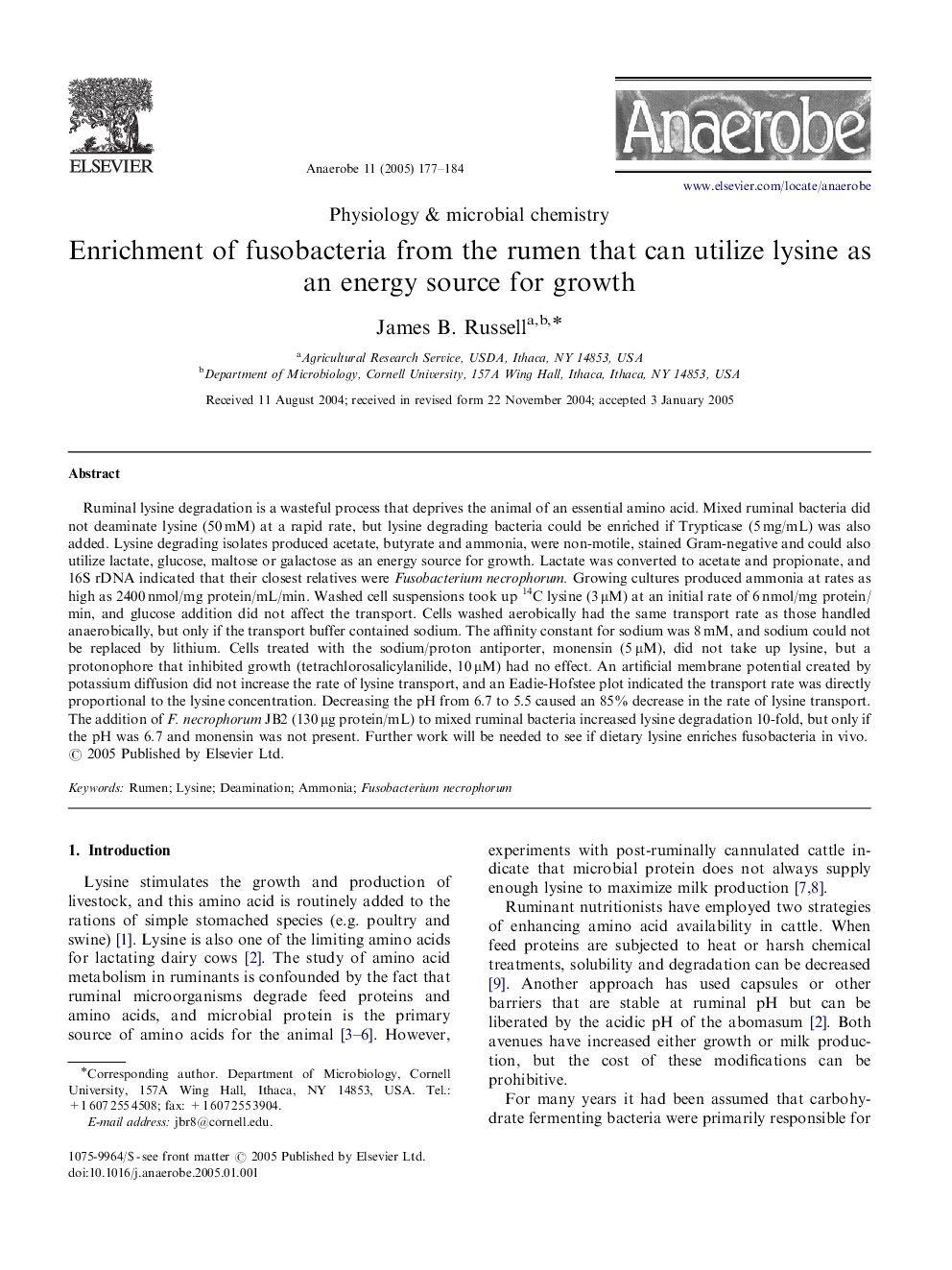| کد مقاله | کد نشریه | سال انتشار | مقاله انگلیسی | نسخه تمام متن |
|---|---|---|---|---|
| 9275059 | 1221721 | 2005 | 8 صفحه PDF | دانلود رایگان |
عنوان انگلیسی مقاله ISI
Enrichment of fusobacteria from the rumen that can utilize lysine as an energy source for growth
دانلود مقاله + سفارش ترجمه
دانلود مقاله ISI انگلیسی
رایگان برای ایرانیان
کلمات کلیدی
موضوعات مرتبط
علوم زیستی و بیوفناوری
ایمنی شناسی و میکروب شناسی
میکروب شناسی
پیش نمایش صفحه اول مقاله

چکیده انگلیسی
Ruminal lysine degradation is a wasteful process that deprives the animal of an essential amino acid. Mixed ruminal bacteria did not deaminate lysine (50 mM) at a rapid rate, but lysine degrading bacteria could be enriched if Trypticase (5 mg/mL) was also added. Lysine degrading isolates produced acetate, butyrate and ammonia, were non-motile, stained Gram-negative and could also utilize lactate, glucose, maltose or galactose as an energy source for growth. Lactate was converted to acetate and propionate, and 16S rDNA indicated that their closest relatives were Fusobacterium necrophorum. Growing cultures produced ammonia at rates as high as 2400 nmol/mg protein/mL/min. Washed cell suspensions took up 14C lysine (3 μM) at an initial rate of 6 nmol/mg protein/min, and glucose addition did not affect the transport. Cells washed aerobically had the same transport rate as those handled anaerobically, but only if the transport buffer contained sodium. The affinity constant for sodium was 8 mM, and sodium could not be replaced by lithium. Cells treated with the sodium/proton antiporter, monensin (5 μM), did not take up lysine, but a protonophore that inhibited growth (tetrachlorosalicylanilide, 10 μM) had no effect. An artificial membrane potential created by potassium diffusion did not increase the rate of lysine transport, and an Eadie-Hofstee plot indicated the transport rate was directly proportional to the lysine concentration. Decreasing the pH from 6.7 to 5.5 caused an 85% decrease in the rate of lysine transport. The addition of F. necrophorum JB2 (130 μg protein/mL) to mixed ruminal bacteria increased lysine degradation 10-fold, but only if the pH was 6.7 and monensin was not present. Further work will be needed to see if dietary lysine enriches fusobacteria in vivo.
ناشر
Database: Elsevier - ScienceDirect (ساینس دایرکت)
Journal: Anaerobe - Volume 11, Issue 3, June 2005, Pages 177-184
Journal: Anaerobe - Volume 11, Issue 3, June 2005, Pages 177-184
نویسندگان
James B. Russell,